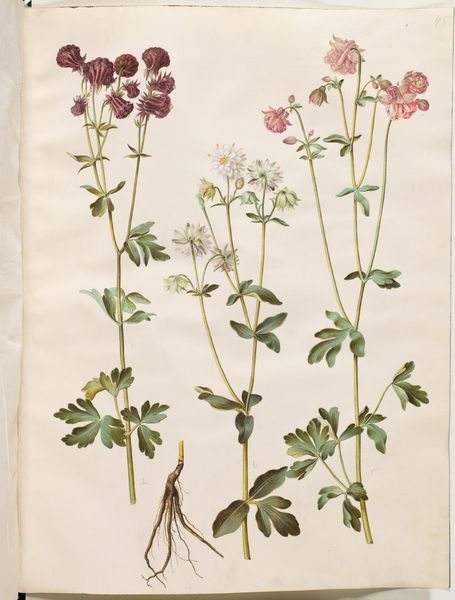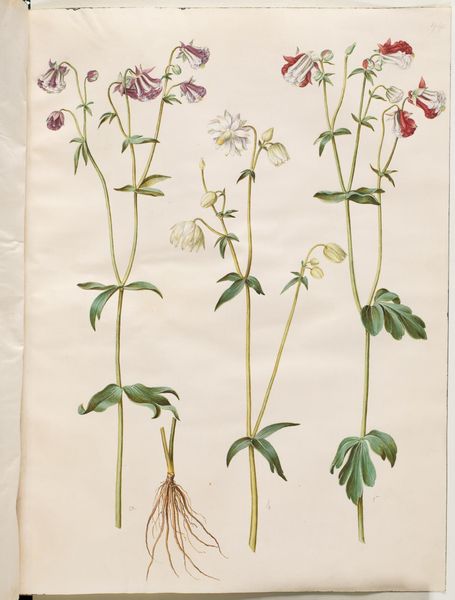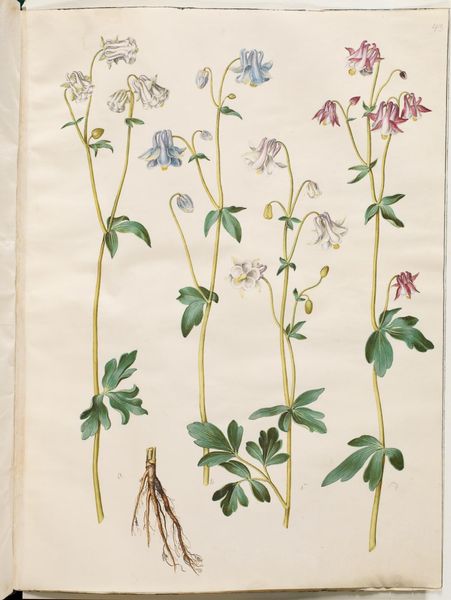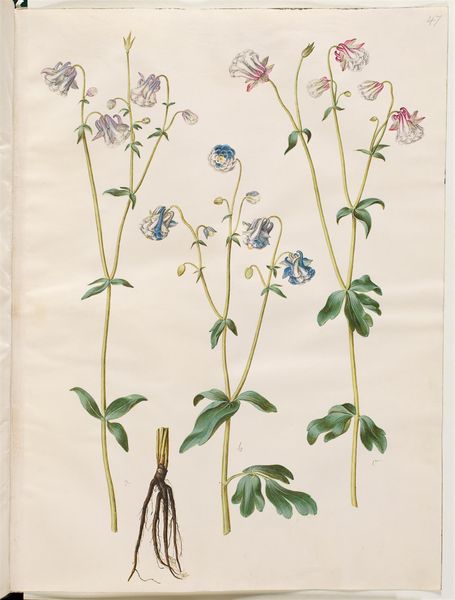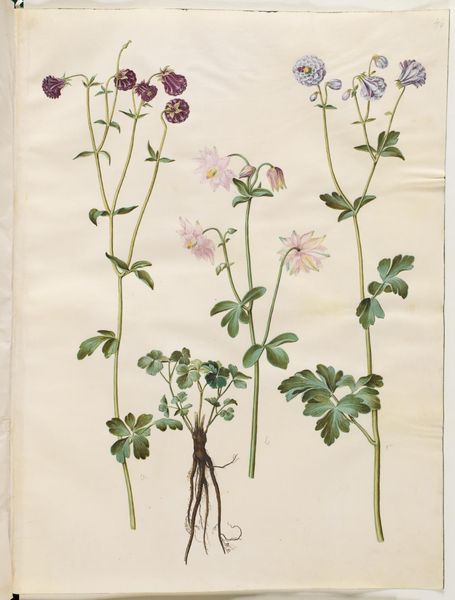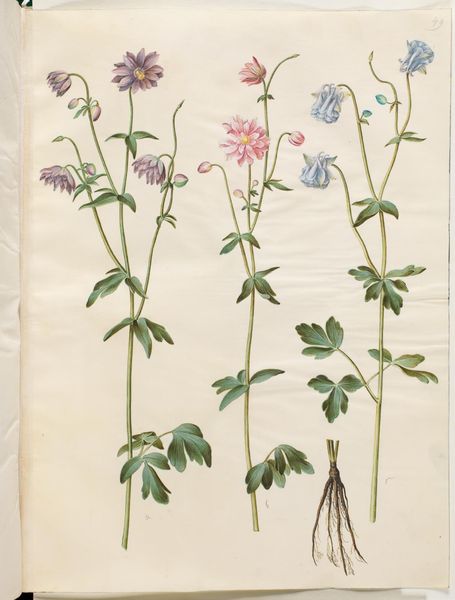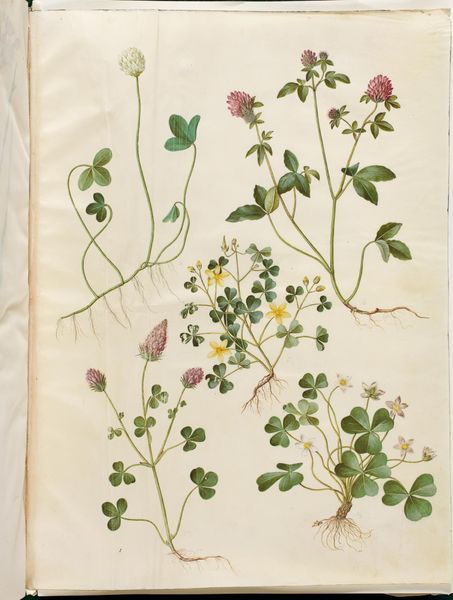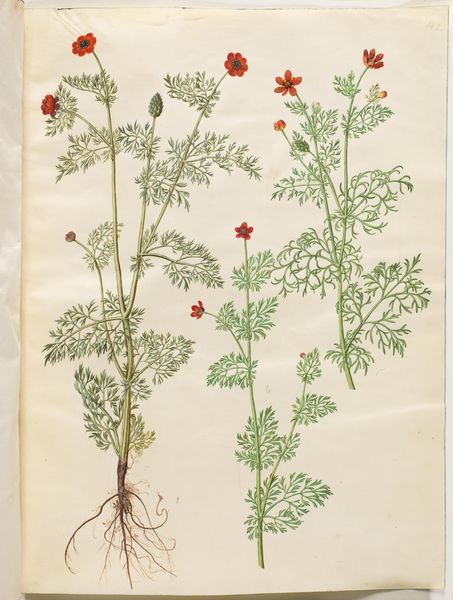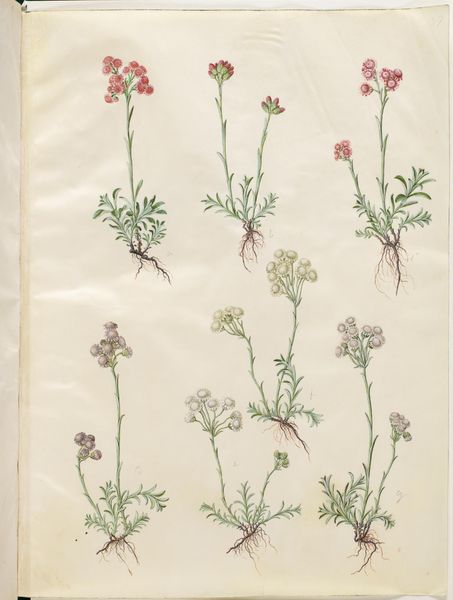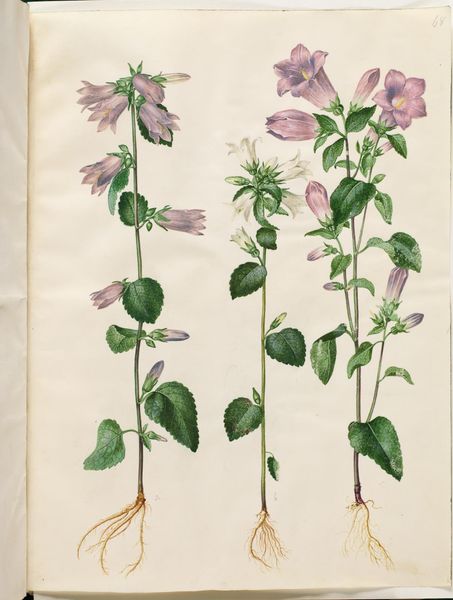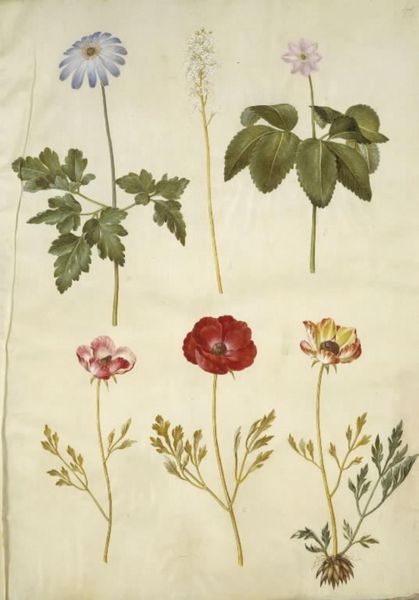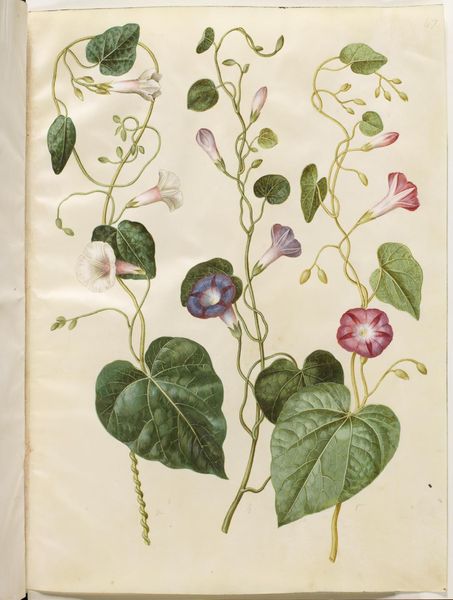
Aquilegia vulgaris (almindelig akeleje) 1649 - 1659
0:00
0:00
drawing, gouache, paper, watercolor
#
drawing
#
water colours
#
gouache
#
paper
#
watercolor
#
watercolour illustration
#
botanical art
Dimensions: 505 mm (height) x 385 mm (width) (bladmaal)
Editor: Here we have "Aquilegia vulgaris (almindelig akeleje)," or Common Columbine, by Hans Simon Holtzbecker, created sometime between 1649 and 1659, using watercolor, gouache, and drawing on paper. It’s such a detailed and delicate rendering; it almost feels scientific in its precision. What's particularly interesting to you about this piece? Curator: It’s important to remember the social and political context. The 17th century saw an explosion of interest in the natural world, driven by exploration and colonization. Botanical art became a way to document and classify newly "discovered" plants. This wasn't just science, it was about power—claiming knowledge and control over the natural world. What do you notice about the way the plant is depicted? Editor: I see. The focus seems to be less on artistic interpretation and more on presenting the plant in a clear, almost diagrammatic way, suitable for identification, as opposed to just enjoying its beauty. Curator: Precisely. Consider who might have commissioned or used such an image. Was it for a wealthy patron's collection, a physician seeking medicinal herbs, or perhaps as part of a larger cataloging project backed by a royal court? The patronage system shaped what art was made and who it was for. Editor: That’s a good point. I hadn’t really considered the socio-political implications of even something as seemingly innocuous as a botanical illustration. I was just thinking about the pretty flowers! Curator: Art always operates within a cultural framework. Understanding that framework helps us understand the art itself. Do you feel like your view of the image has changed? Editor: Absolutely. It makes me appreciate the craftsmanship, but also understand it as a product of its time, intertwined with historical forces. It also prompts me to look deeper the next time. Curator: Excellent. Examining art's function within different power structures adds valuable dimensions to our understanding.
Comments
No comments
Be the first to comment and join the conversation on the ultimate creative platform.
